
|
|
|
12.4 PROXIMITY DETECTION
������������At times we want to know when a physical object is present. This may be a non-contact detection.
12.4.1 Optical (Photoelectric) Sensors
������������Optical sensors can detect part presence using a light source and detector.
Emitters generate light in visible and infrared light bands. These are usually LEDs or laser diodes.
Detectors are designed to vary electrically as light intensity varies. The most common used is the phototransistor.
Ambient light can interfere with a simple optical beam. As a result most sensors now use a modulated pulse with a frequency up to the low KHz range. This allows better detection at longer distances with lower power.
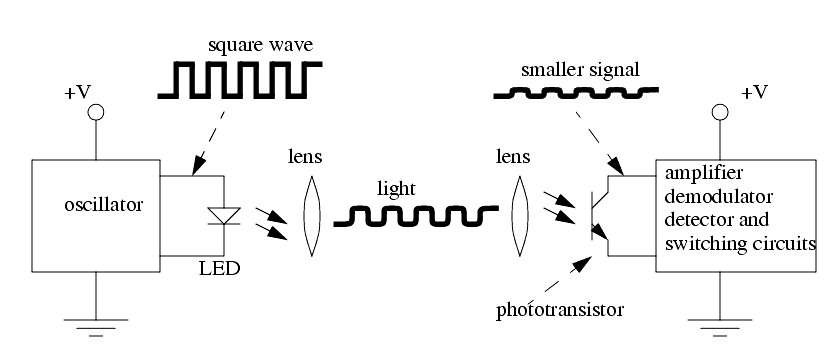
The relative locations of the source and detectors, as well as surface conditions have a major impact on the selection of sensor types. These include,
The simplest form uses a detector only with ambient or radiated light.
- radiated light requires some sort of photometric phenomenon such as a hot part will radiate infrared light.
Optic sensors can often be separated for space and other constraints.
- the phototransistors and LEDs can be separated from the other circuitry to fit the sensors into smaller parts.
When the emitter and detector are separated and the beam is interrupted this is known as opposed mode.

When the emitter and detector are in a single unit this is known as retroreflective.
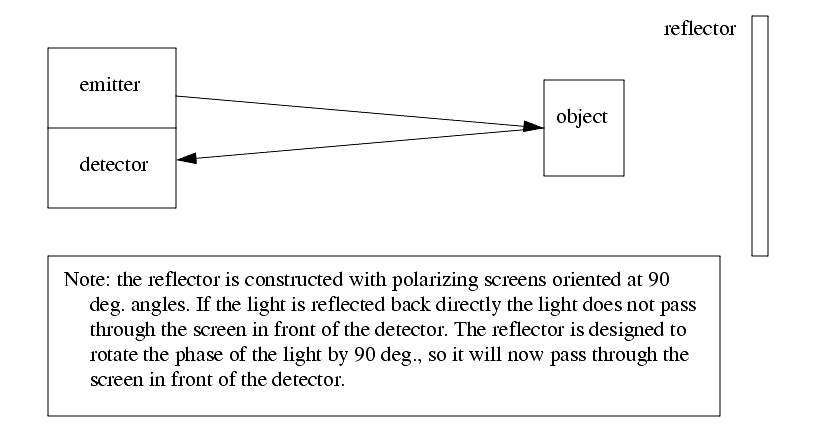
Polarized light can be generated using filters.
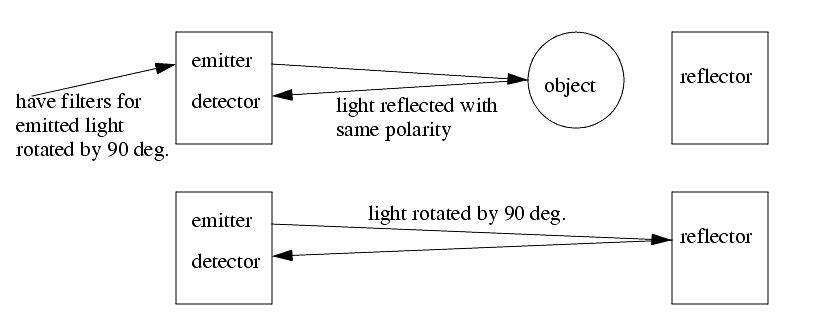
Diffuse sensors are like the retroreflective type, except that the returning light does not need to be polarized.

Alignment of the emitter is necessary, and can be a problem if the sensors are separated by a large distance and the beam intensity decreases.
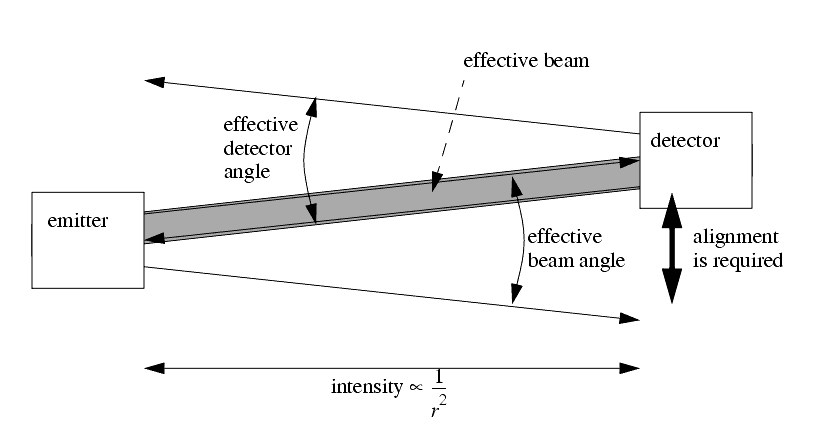
The beam of emitted light should generally be less than the width of the detected part.

Separated sensors can detect reflective parts using specular reflection. This needs a reflective surface.

By focussing emitters and detectors optics we can sense presence at a specific distance. This is known as convergent beams sensing.
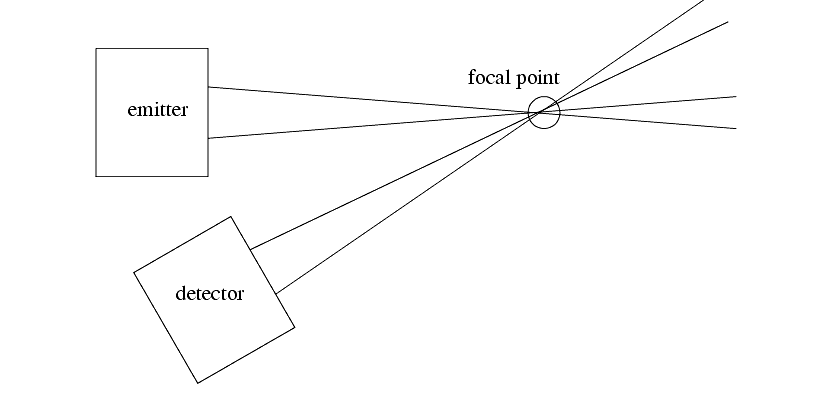
Fixed field sensors use a physical setting.
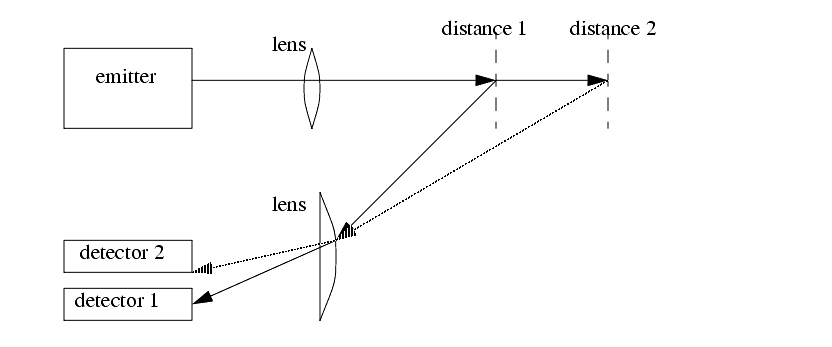
Opposed beams can also be for a large range light curtains.

Typical reflectivity values are given below [Banner Handbook of Photoelectric Sensing]
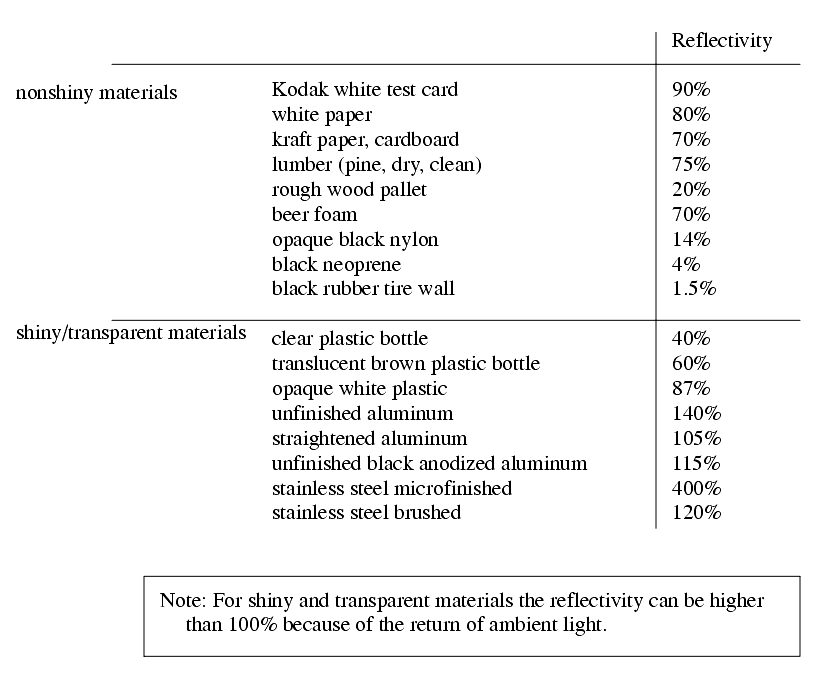
Many sensors have sensitivity adjustments that will need to be adjusted to the materials.
12.4.2 Capacitive Sensors
������������Uses changes in capacitance to detect part presence. Recall the basic equation.

Works well with most materials, very good for plastics.

If the part is conductive it acts as added surface area for the capacitive plates and increases capacitance. If the part is nonconductive it acts like a dielectric and increases the capacitance. In total the changes are normally in the order of pF.

In the sensors the electrodes are normally round rings.

Different materials have various dielectric properties. The list below is a sample from [Turck Proximity Sensors Guide].
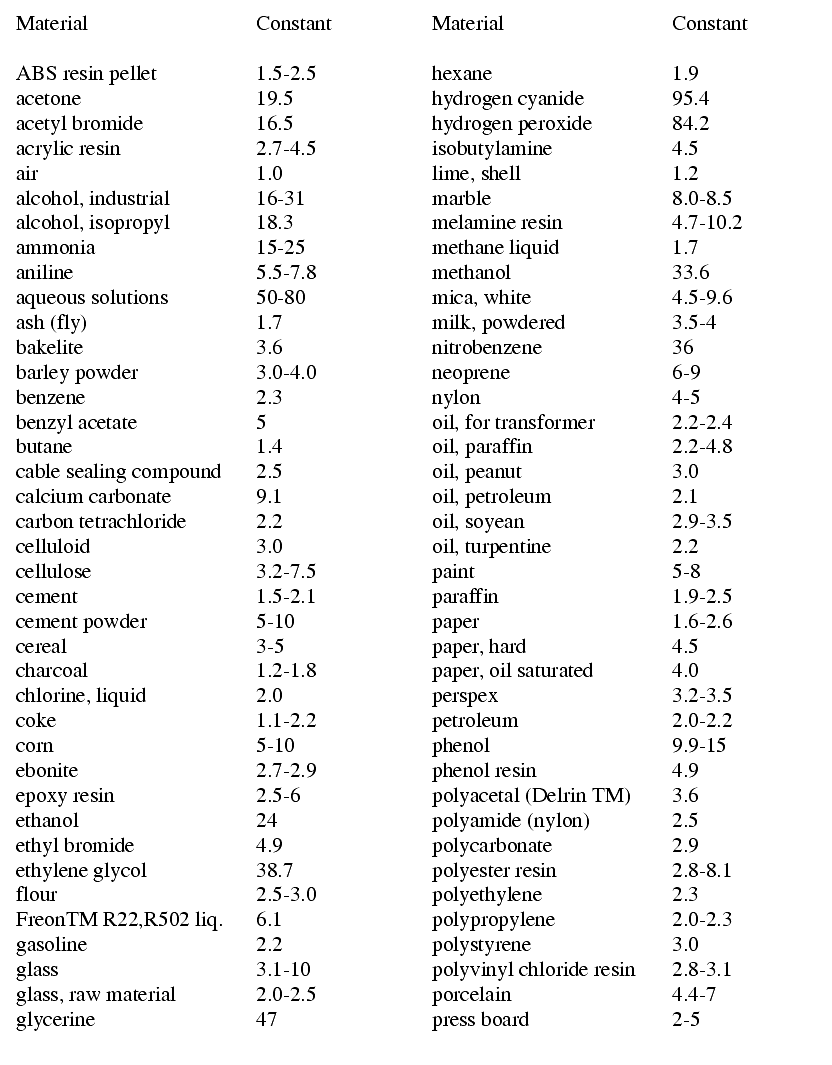

12.4.3 Inductive Sensors
������������These sensors work for all metals (conducting materials).
These use an oscillating magnetic field.
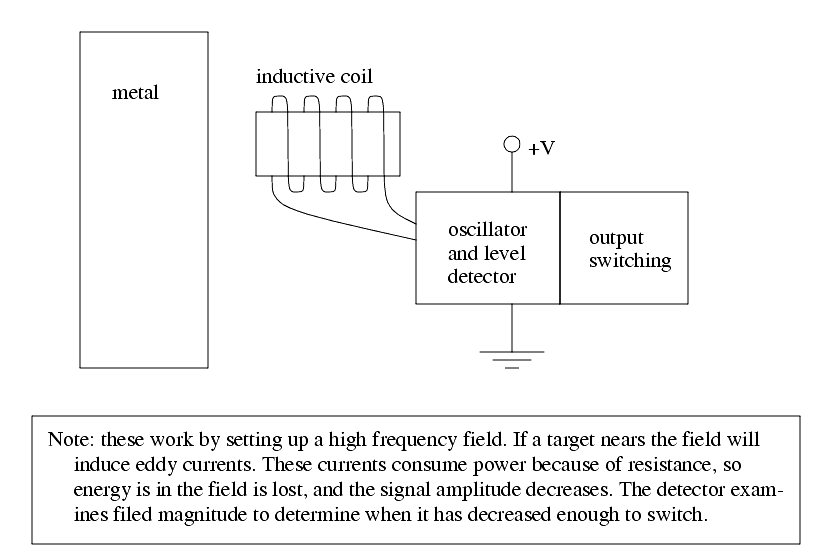
The coils can be shielded to make them more selective to the front of the coils. Unshielded coils have larger fields and sensitivity to the sides.

Clearly ferrous targets will work well, but other metals can be used also.
12.4.4 Ultrasonic
������������The reflection of sound waves can be used to detect parts or distances.
These normally use frequencies above 20KHz which is above the normal human hearing threshold of 16KHz.
electrostatic - uses capacitive effects. It has longer ranges and wider bandwidth, but is more sensitive.
piezoelectric - based on charge displacement during strain in crystal lattices. These are rugged and inexpensive.
Good for sensing distances to most materials with surfaces perpendicular to the beam.
Applications of these are similar to optical sensors.
12.4.5 Hall Effect
������������These sensors use a magnetic field in a semiconductor to change current flow.
As a result these sensors are designed to switch in the presence of a magnetic field.
these are typically used for no contact limit/home detectors in machines.
12.4.6 Fluid Flow
������������A specific fluid flow rate can be detected using a float in a tapered channel.

12.4.7 Other Types
������������
Search for More: |

Custom Search
|

|